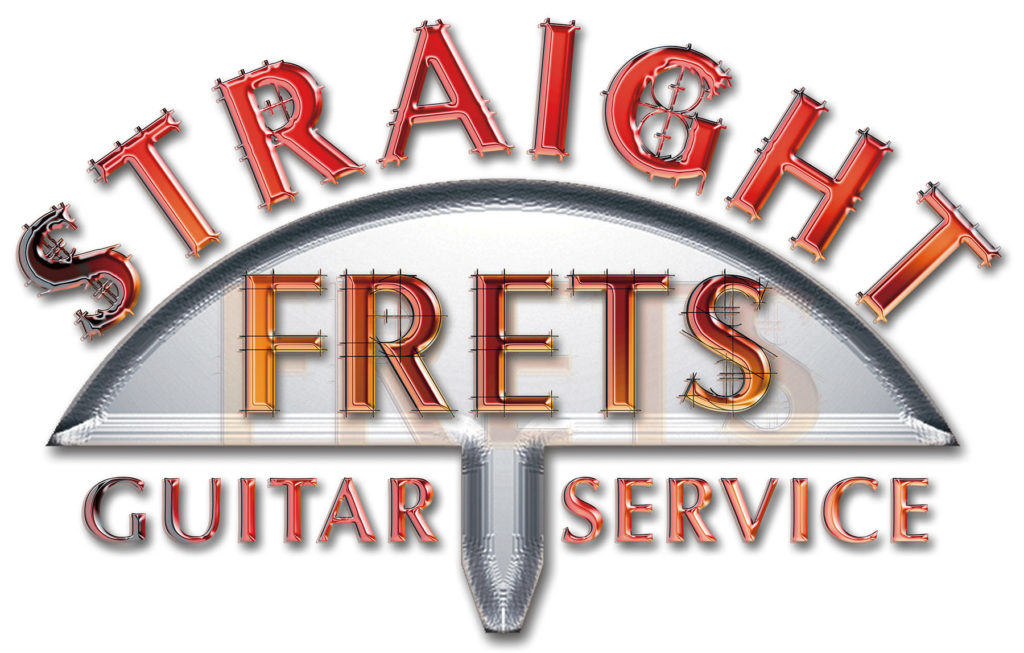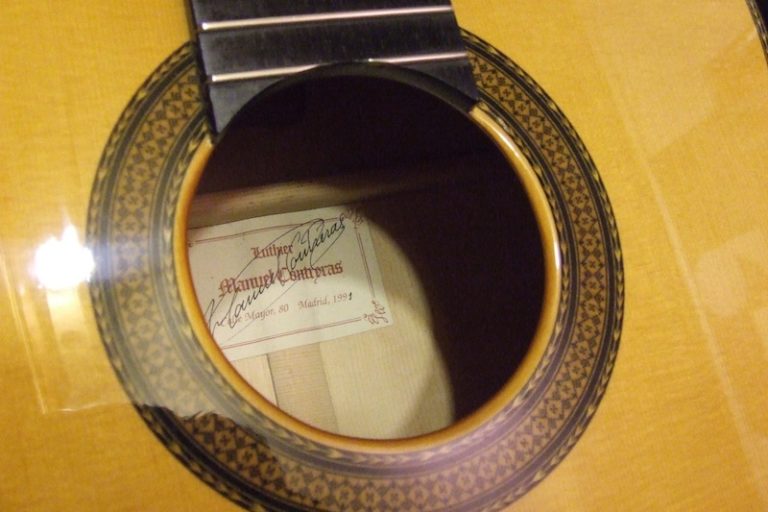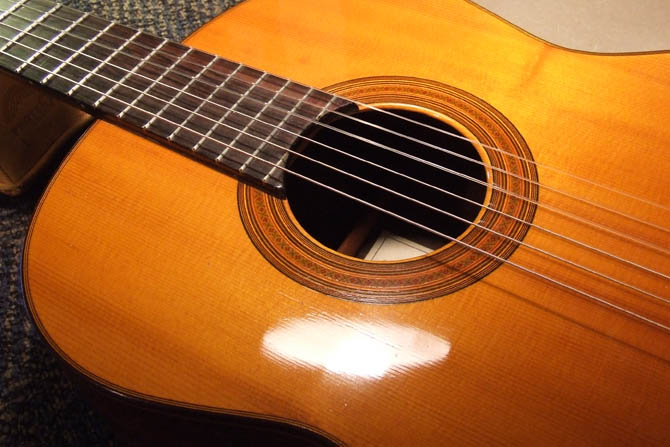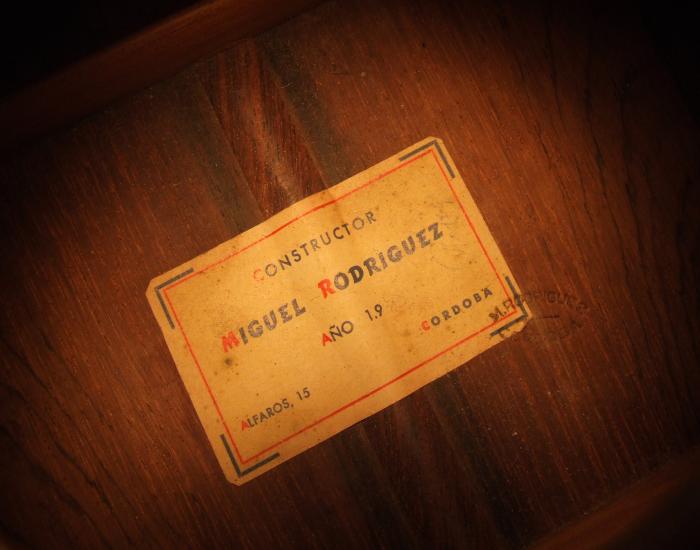
This Miguel Rodriguez “Church Door” concert classical guitar is a very special one. It is owned by local classical guitarist Susan McDonald. I am honored to be only the second person to work on this instrument, the first being Yuris Zeltins of The Blue Guitar in San Diego when Pepe Romero owned this instrument.
These church door guitars have an intresting lure to their past: Miguel Rodriguez of Cordoba, Spain found a large church door made of cedar that had been adrift in the Mediterranean Sea. He cut it up to create 22 of the most noted guitars of his carreer. Meastro Pepe Romero, whom I’ve had the distinct pleasure of having about 25 lessons with over the years, owned several of these guitars which are the guitars used on his solo and Romero Guitar Quartet recordings throughout the 70’s, 80’s, and 90’s.
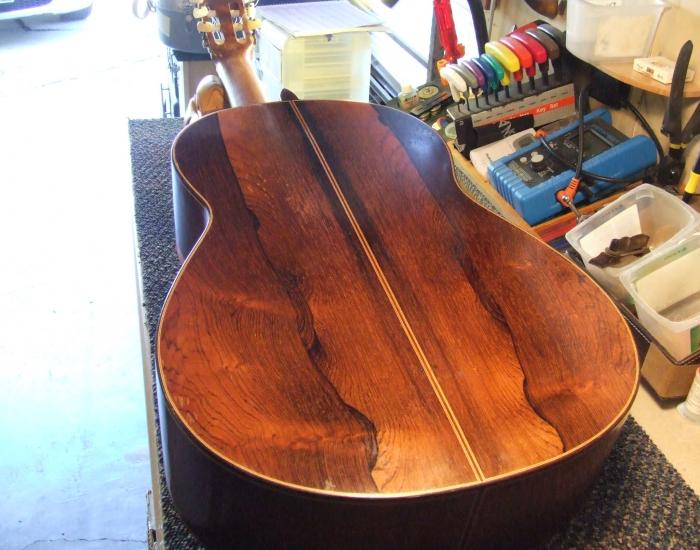
The striking sapwood on the Brazilian rosewood sides are just a delight.
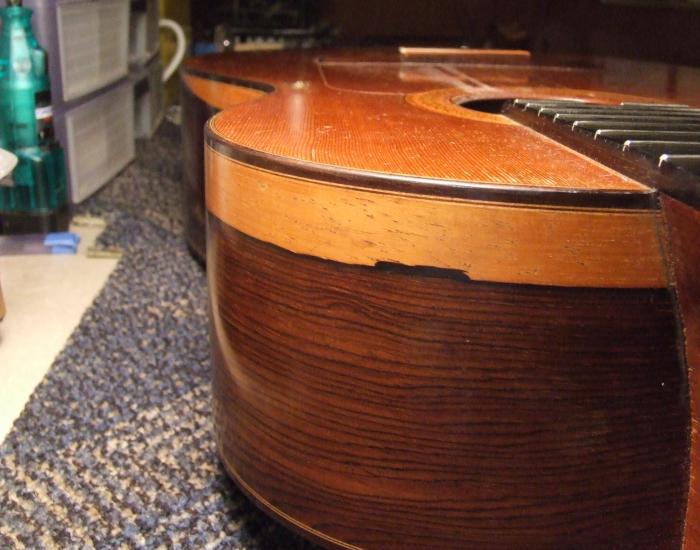
This guitar also has a slightly larger body that most classical guitars, which helps give it its large sound.
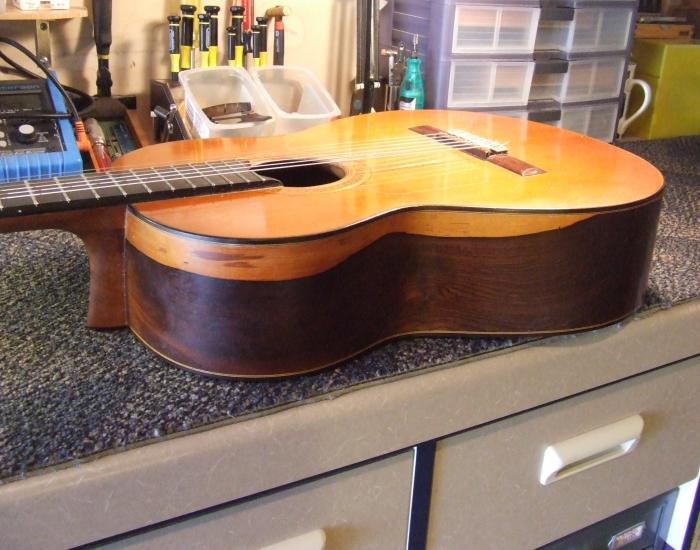
The reason for this guitar coming into the shop was because of the tuners had completely frozen up due to graphite used some time ago and the worm gear picking up dirt and debris attracted by the graphite. Because of this, I don’t reccommend the use of graphite in any open gear tuner.
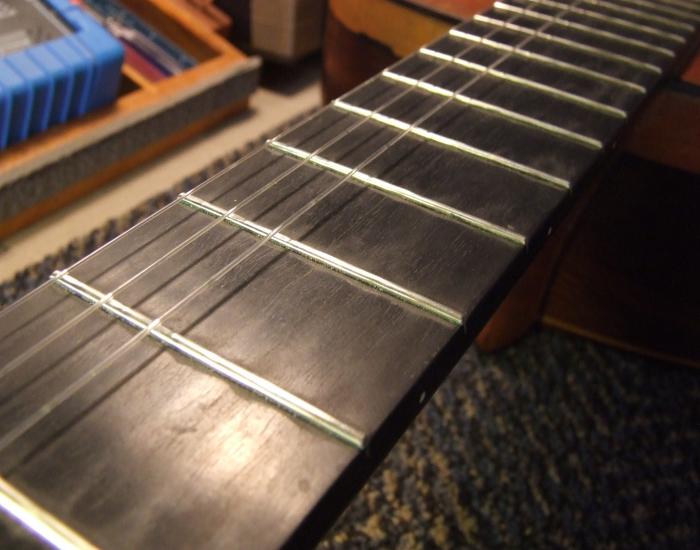
This guitar had not had more than one string removed at a time for over 25 years, so we convinced the owner that this is not only a safe thing, but a good thing to keep your guitar’s frets polished and your fingerboard oiled.
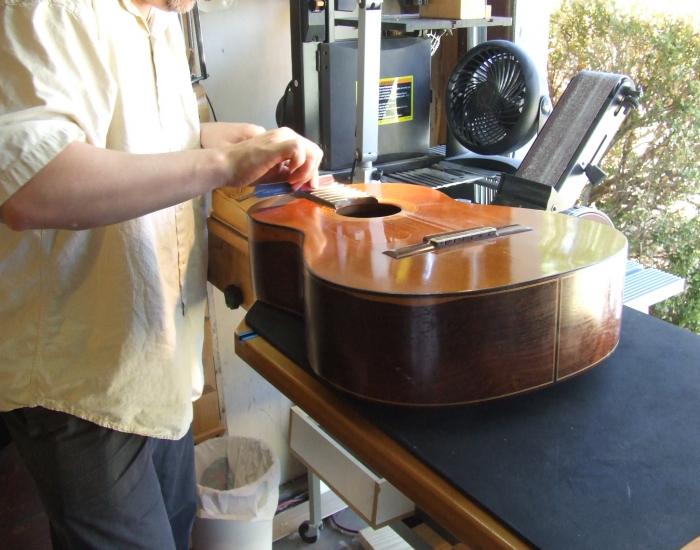
Here’s a close up of the cultrip. Looks fine, but he’s a sneaky one.
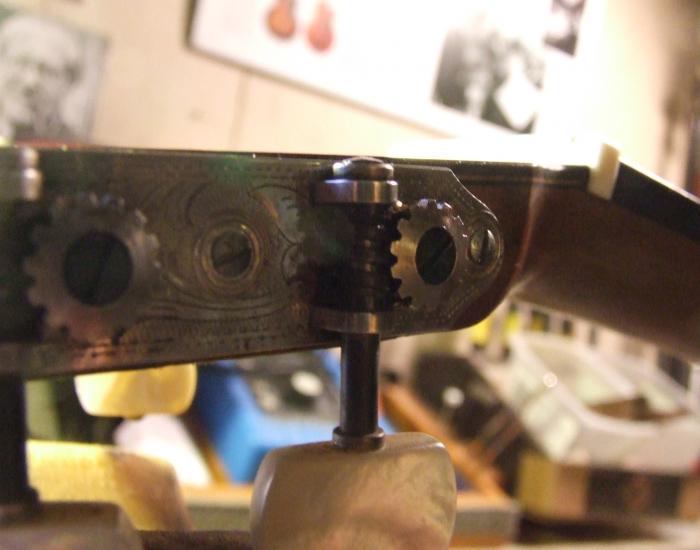
Although I believe in intonated shelf nuts for electric guitars (as I’m an authorized Buzz Feiten nut installer), I will always argue that the 3rd string will need a shorter length than the rest; the pitch of the G string falls faster than the rest when unstringing a guitar. The elastic nature of the string also allows for this string to rise in pitch faster than the rest. Without this done, the G# in an E major chord will be extra sharp, due to the tightness of the string in this region. This compensation was done by Yuris, and I totally agree with it.
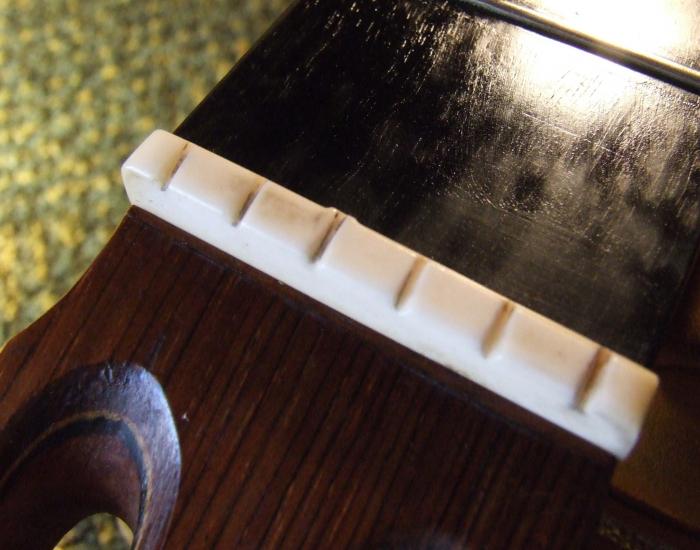
This crack in the fingerboard hasn’t moved since Susan bought the guitar in 1985, so it’s not really a huge issue. It is a good idea, however, to document any cracks you might see in your instrument’s back, sides, top, etc. Logging them into some sort of journal with dates, measurements, and even humidity levels can be a real eye opener for owners and especially repairmen that are suddenly thrust into the heart of an issue after the damage is done.
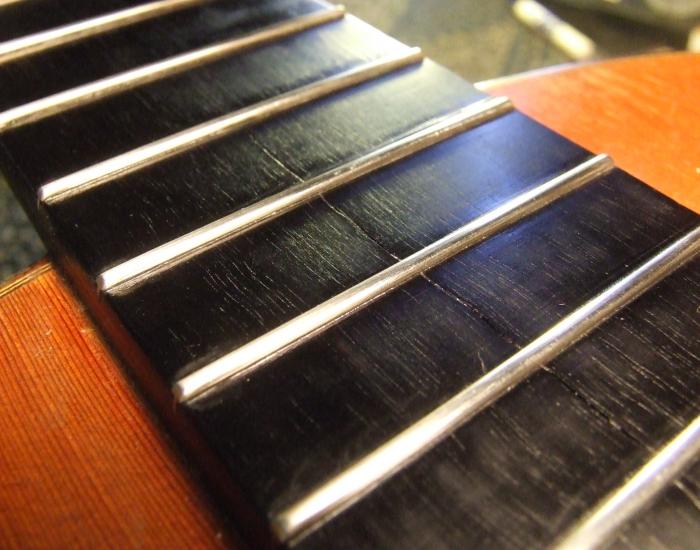

Miguel Rodriquez brands his guitars in the corner of the label which also adorns the back of the headstock.
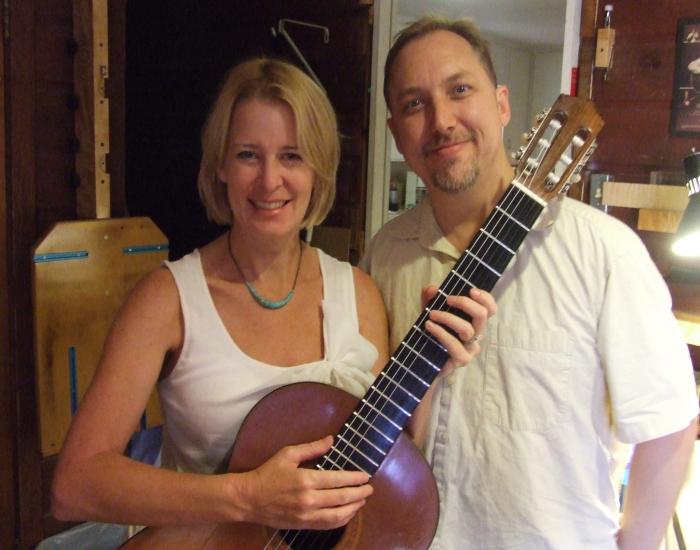
Susan has played many concerts such as Carnegie Hall, as well as for President George W. Bush, and former Governor Ann Richards. She has many videos on YouTube and several CDs for sale. She was thrilled with her guitar, and I was equally thrilled to have the privilege of working on such a legendary instrument!
